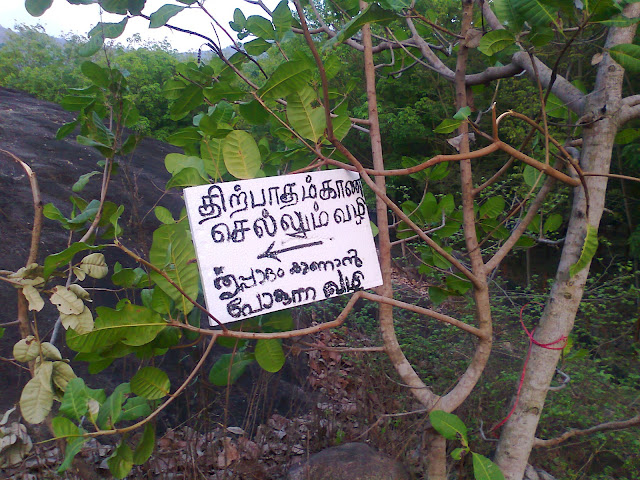Thirunanthikarai Cave Temple – The Temple
Thirunanthikarai
Cave Temple is made in large, oblique wall of cliff and is ascended by a flight
of some 60 stone-cut steps. Rock-cut temple itself is small, the facade has two
columns and two pilasters. Nowadays, to prevent the vandalism, the entrance is
closed behind bars. Presiding deity of the temple is Thiru Nanthikeswarar. An active
temple is located to the south of this cave temple built in later times. Earlier,
there were several sculptures present inside the temple, which attracted
devotees and visitors. Although the sculptures do not exist at present, there
are stone carvings that narrate many interesting tales pertaining to the Indian
culture and religion.
The
south facing Thirunanthikarai rock cut cave temple is excavated on the southern
slope of the hillock and therefore the cave lies in an east-west orientation.
The cave floor is formed 4 m above the ground level. A flight of ten steps
(including the two steps provided later by Archaeological Survey of India
(ASI), leads to the cave. Eight steps sculpted on the (mother) rock slope. The
facade is 4.97 m in the north-south and 0.51 cm in the east-west directions.
The evenly leveled rock ground is 5.68 m in the east-west and 64 cm in the
south-north directions.
The
finely leveled rock floor is formed 4 cm above the rock ground and measures
about 52 cm in the south-north and 5.40 m in the east-west directions. The
upana is sculpted 5 cm above the rock floor and runs from east to west. The
facade consists of two massive pillars in the middle and two pilasters on the
corners. The pillars and the pilasters are square-kattu-square in shape. The
plain angular potikas (corbels) support the slender uttira (beam).
and there is no vajana above uttira. The rough rock brow forms
the kapota (not designed well). The canopy of the kapota is flat. and do not
incline downwards.
Above
the brow there are two rectangular sockets. There are also two sockets on the
rock floor. These four sockets suggest the chances of forming temporary
shed. One meter above the kapota, bhumidesa is indicated with grooves and
carvings. The mother rock excavated well from top to down to match slopes
of the hillock. The western wall is 1.97 m in height and 1.04 m in width and
the eastern wall is 1.89 m in height and 1.19 m in width. There are two 1.54 m
tall (shallow) niches on both the walls and Vattezhuthu inscriptions are
inscribed. The Vattezhuthu inscription on the 82-cm wide eastern wall is
damaged and the other inscription on the western wall is intact.
The
upper square, kattu and part of lower square of the western facade pillar bear
another Vattezhuthu inscription. The facade leads to the rectangular
mukha-mandapam which is 0.86 m in the north-south and 3.28 m in the east-west
directions and 2.23 m in height. The inner-mandapam floor is raised to 0.6 cm
in height. The mukha-mandapam floor is evenly sculpted. The plain eastern and
western walls of mukha-mandapam show prastara components i.e., uttiram and
vajanam between wall and the roof. The vajana is running throughout the
mandapam.
The
inner-mandapam on the rear is 5.40 m in east-west and 2.42 m in north-south
directions and 2.18 m in height. Two square pilasters on either side of the
cave walls of the inner-mandapam are supporting the uttira. The walls are
plain. The roof of the mandapa is well formed. The square sanctum is
2.16 m in all the four sides and 2.17 m height. The walls and roof are plain. The
Shiva Lingam is instituted in a socket pit which is 70 cm in east-west and 1 m
in north-south directions. The square Avudai is 82 cm in north-west and 78 cm
in east-west directions and 0.53 cm in height.
The
external faces of Avudai is embellished with padabandha adhishtana with
components such as jagadi, octagonal kumudam, khantam with pada flanked by
kampa and without pattika. The rudra bana is 44 cm in height. A small pit is
shown towards north to receive the anointed water. A water chute is seen
running up to the north wall and east wall of the sanctum and continued in the
east wall of the mukha-mandapam. The northern wall of the inner-mandapam
is washed with stucco coatings (Sudhai) and painted with mural paintings. The
mural paintings are considered as important since paintings belongs to earlier
phase of Kerala mural art.
The line
paintings include the human figure with folded right hand on the chest and
wears necklace with dollar. The right leg is folded and rested on the seat. The
left leg could not be viewed. The Ganapathy image is sculpted on the western wall
of the mukha mandapam. The Lord wears Karandamakutam with head band, yajnopavita,
armlets and bracelets. The right rear-hand holds broken tusk, right fore-hand
holds an unknown object, the rear left-hand holds sugar cane leaves and the
fore-hand is damaged. The left tusk is visible and the right one could not be
seen. The Vidyadharar is seen above right-hand corner of Ganapathi. The flying
figure holds a flower.



















